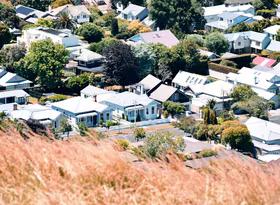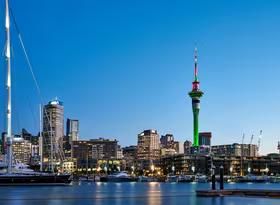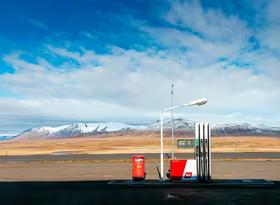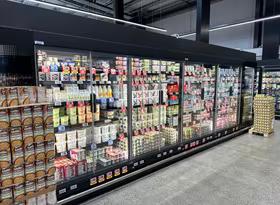
A brief history of domestic tourism trends
Our current economic environment is putting the tourism sector in a precarious position; tourism arrival recovery from several key international markets has declined, if not stagnated, over the last few months. Just this week, Stats NZ confirmed this week that the New Zealand economy has entered a technical recession. We are also now entering a typically quieter period in the year for tourism, with summer now behind us and the ski season on the horizon. In this piece, we examine trends in domestic tourism to enhance our understanding of the sector’s current position, including how domestic travel could affect the sector as it grapples with tough economic conditions during the off-season.
Guest nights supported by domestic tourists in the off-season
Monthly guest nights data from before the pandemic reveals that the domestic share of total guest nights is at its highest (generally around 65%) during the off-season, specifically in the month of June (see Chart 1). Domestic guest nights do decline from their January peak, but at a slower rate than international. Between January and June 2019, international guest nights fell 54%, compared with a 40% drop in domestic guest nights.
Pandemic encouraged Kiwis to explore the country
Analysing domestic tourism behaviour during the pandemic also allows us to see how Kiwis behave when international travel options are limited. MBIE’s Tourism Electronic Card Transactions data, which tracks monthly tourism spending across New Zealand by origin, indicates that domestic tourists generally preferred to travel as far from their local region as possible while the borders were shut.
Over the year to June 2021, tourism spending by Auckland residents grew 28%pa in the upper North Island, 26%pa in the rest of the North Island, and 70%pa across the South Island (see Chart 2). Similarly, Wellington tourist spending grew 29%pa across the rest of the North Island, but 62%pa across the South Island. These figures illustrate that in the absence of international travel options, Kiwis took the opportunity to further explore their own backyard, notwithstanding stronger economic conditions at the time. In 2021, one-year fixed mortgage rates were about four percentage points lower than they are currently, and inflation was running at just 3.3%pa in the June 2021 quarter.
Domestic tourism held up over the Global Financial Crisis
In periods of harsher economic conditions, domestic tourism has been more resilient compared to outbound international travel. Chart 3 compares year-end growth in domestic guest nights to outbound departure numbers. Outbound tourism fell 3.9%pa over the year to July 2009, and in the same period, domestic guest nights growth reached a peak of 5.5%pa. Domestic guest nights did indeed dip negative during the fallout of the Global Financial Crisis (GFC), declining 0.8%pa over the year to October 2009, but outbound tourism saw a much sharper decline of 3.3%pa. Together, this suggests that many households substituted domestic trips for their overseas holidays during the GFC.
The opposite trade-off occurred in 2017, during a period of global economic expansion that, according to the United Nationals World Tourism Organization, massively benefited international tourism across the world. Over the year to June 2017, growth in outbound tourism reached a peak of 11.5%pa, and domestic guest night growth eased to just 0.4%pa.
Current retail data has shown that Kiwis are reducing their discretionary spending in the face of high inflation and elevated interest rates. This is consistent with the GFC, which saw real spending in more discretionary categories such as recreational goods, electronic goods, and homeware take a massive hit.
These results suggest that when times are good, Kiwis travel as far as possible – whether that be the other end of the country, or overseas. Conversely, when budgets are tight, holidays closer to home will do just fine.
Global economy putting a lid on international visitor recovery
Previously highlighted in our April newsletter is the stagnation of tourism arrival recovery due to deteriorating global economic conditions. Stats NZ data shows that in April, arrivals from Australia remained at 81% of pre-pandemic levels, and the recovery of arrivals from France, Germany, the UK, and the Netherlands dipped from March. Although arrivals from Asia are continuing to grow even as we enter the off-season, supporting overall tourism arrival numbers, tighter household budgets across the globe and a dissipation of post-pandemic pent-up travel demand is keeping a lid on growth (see Chart 4).
In accordance with typical seasonal patterns, monthly international guest nights are now beginning to dip. As expected, domestic guest nights are also falling, but relatively slowly. Between March and April 2023, international guest nights fell 22%, compared to a decline of just 3% in domestic guest nights (Chart 5). In April 2023, there were 2.4m domestic guest nights across the country, and 1.0m international guest nights, taking the domestic share of total guest nights to 70%. Of course, international tourism has made a massive recovery compared to levels seen over 2022, but the global economic factors weighing on international tourism, in addition to the current off-season, means we expect more subdued growth over the next few months, and an increased proportion of domestic guest nights.
Domestic tourism has been a vital support to the sector during off-seasons, lockdowns, and economic downturns. Domestic travel sentiment is not necessarily set to grow more positive in the face of current economic headwinds, but we can expect domestic tourism to hold up comparatively better than international travel over the coming months, providing support to local businesses as they juggle both an off-season, and a recession.















